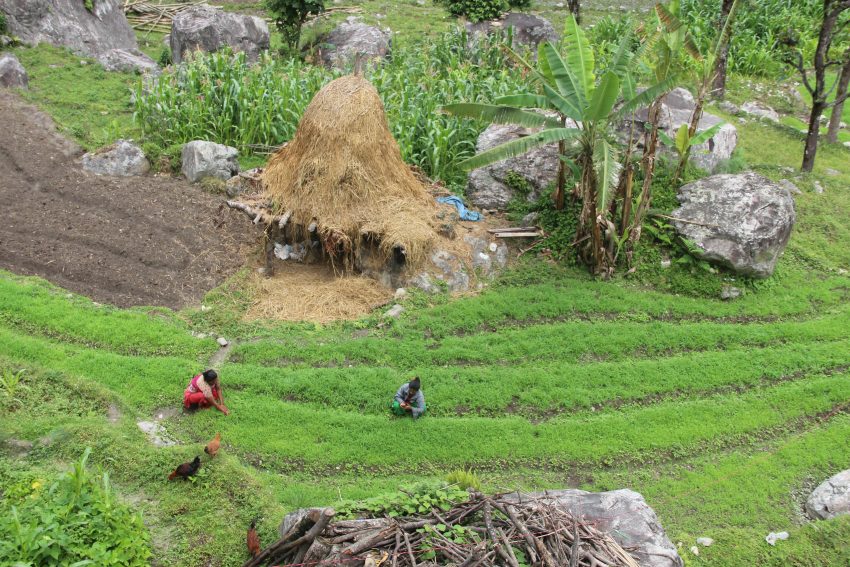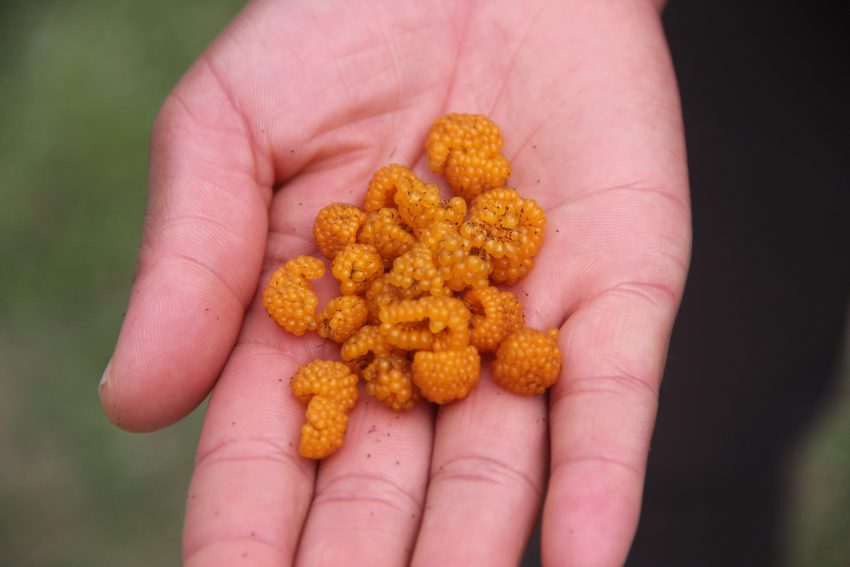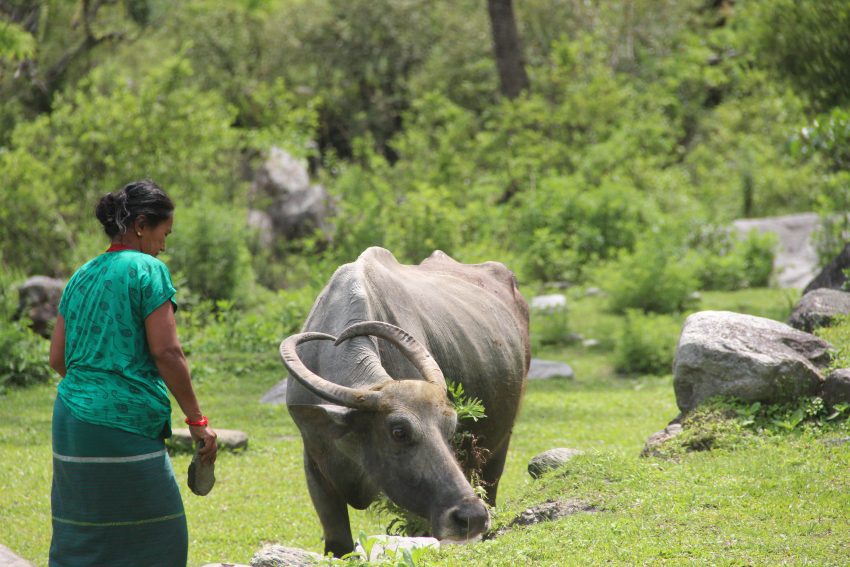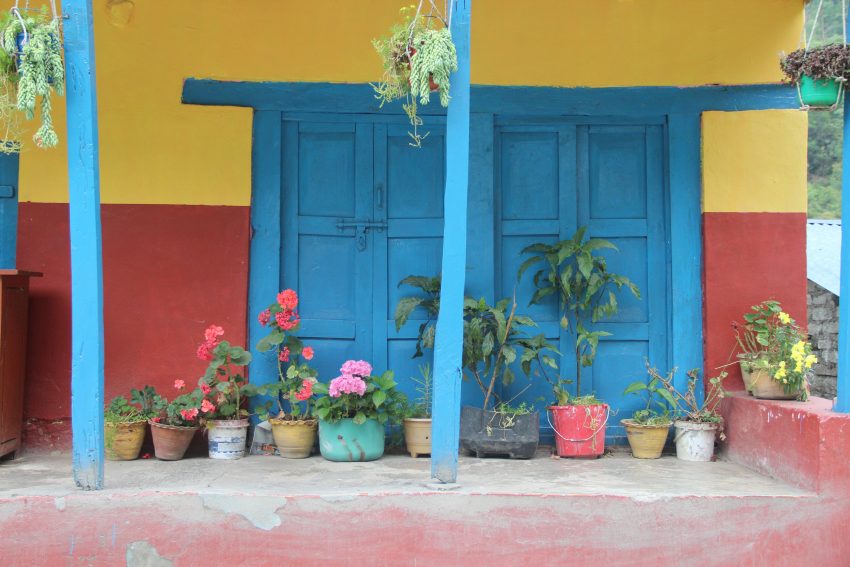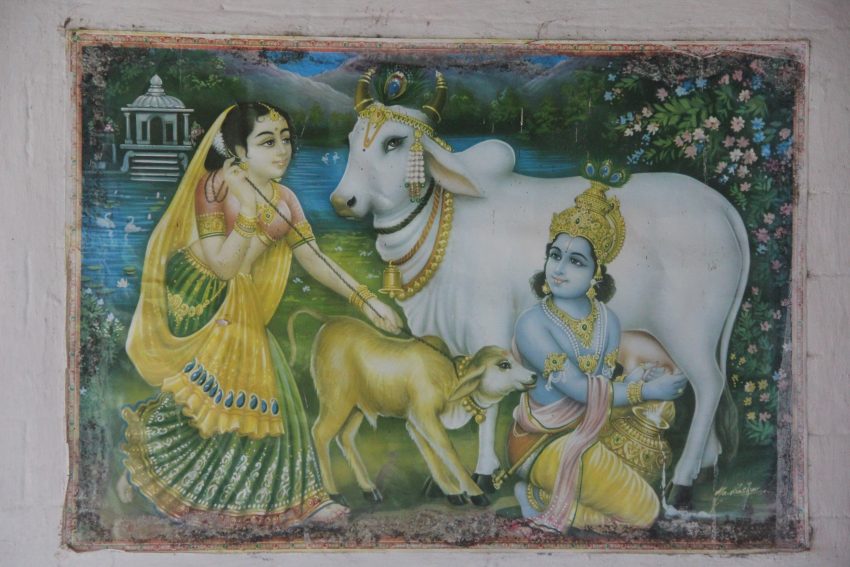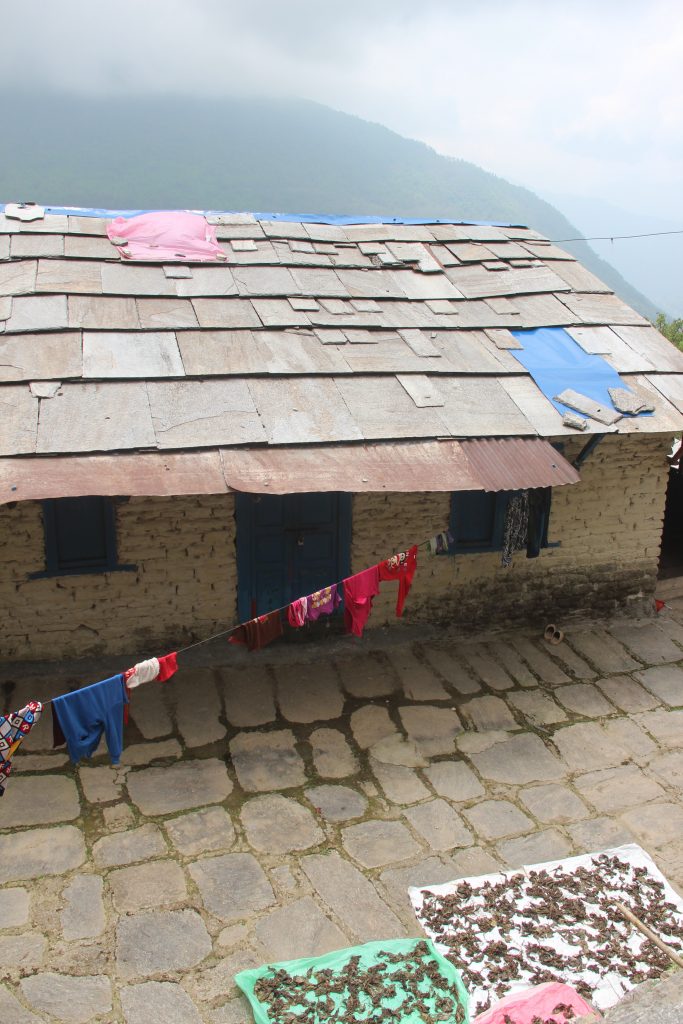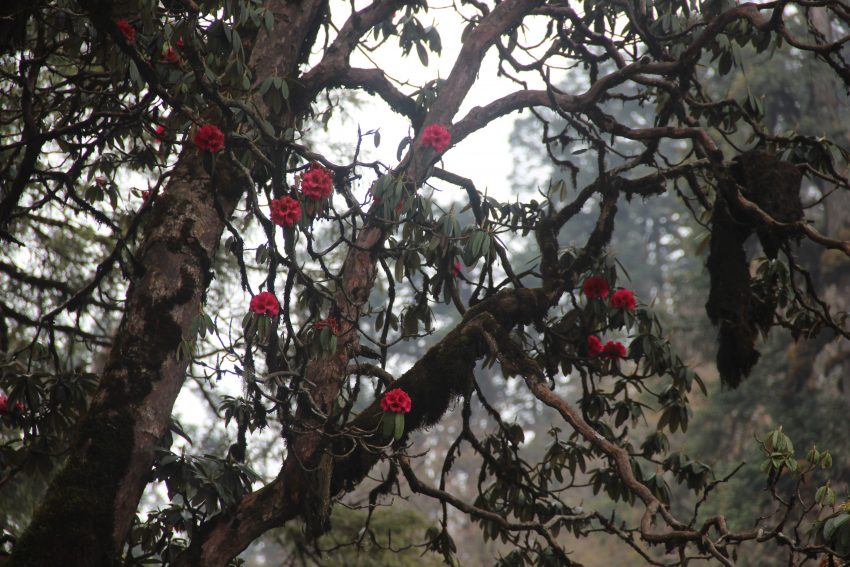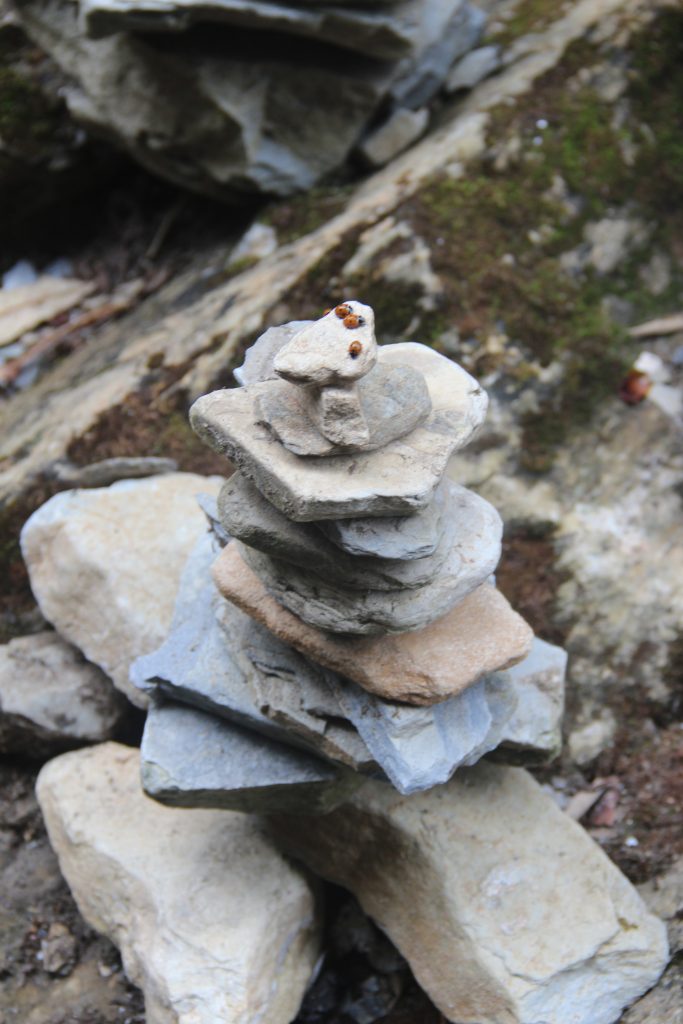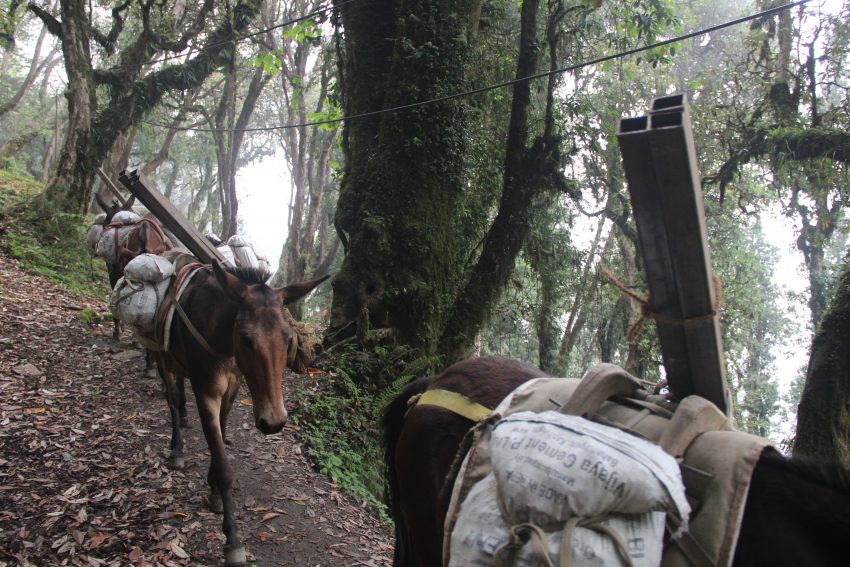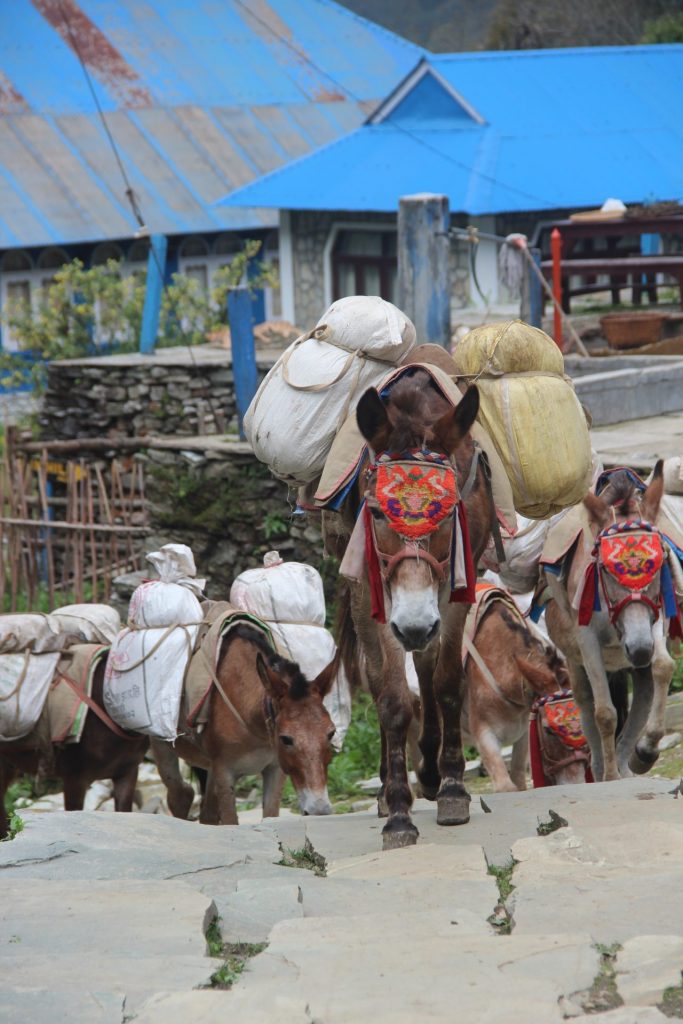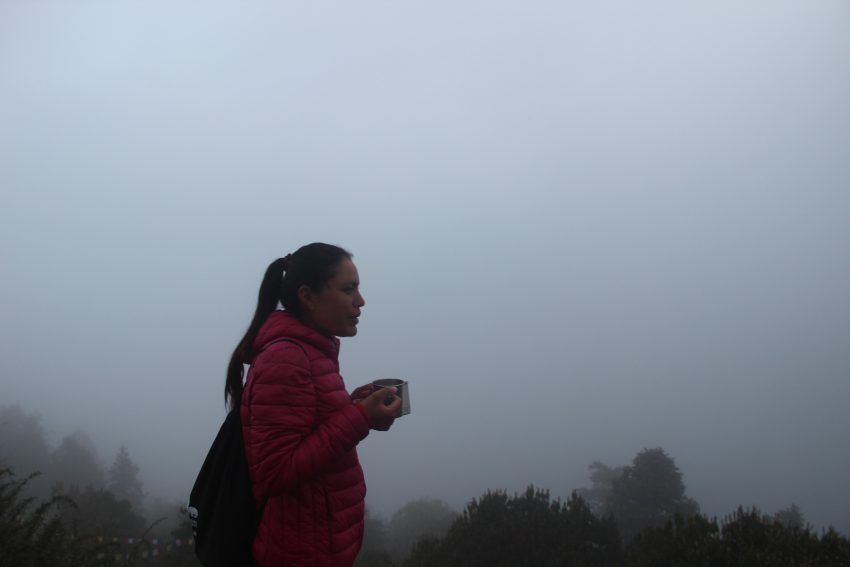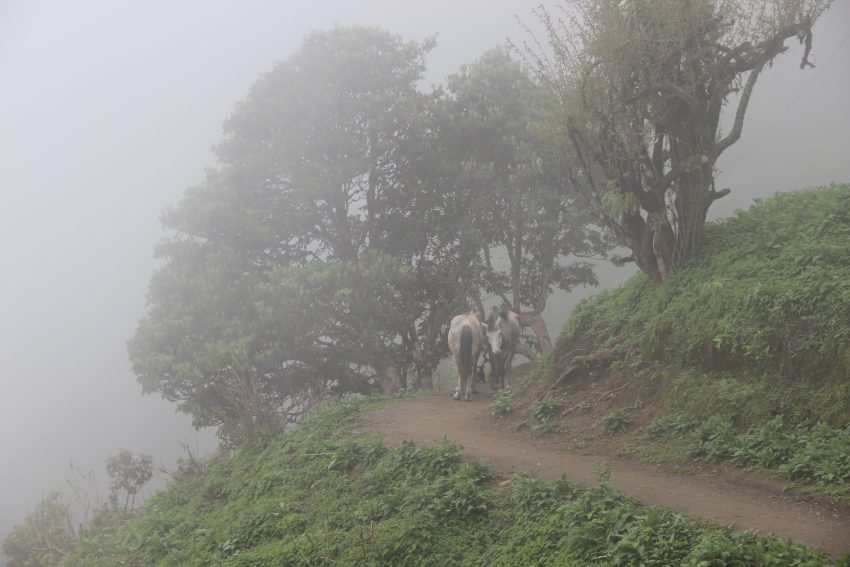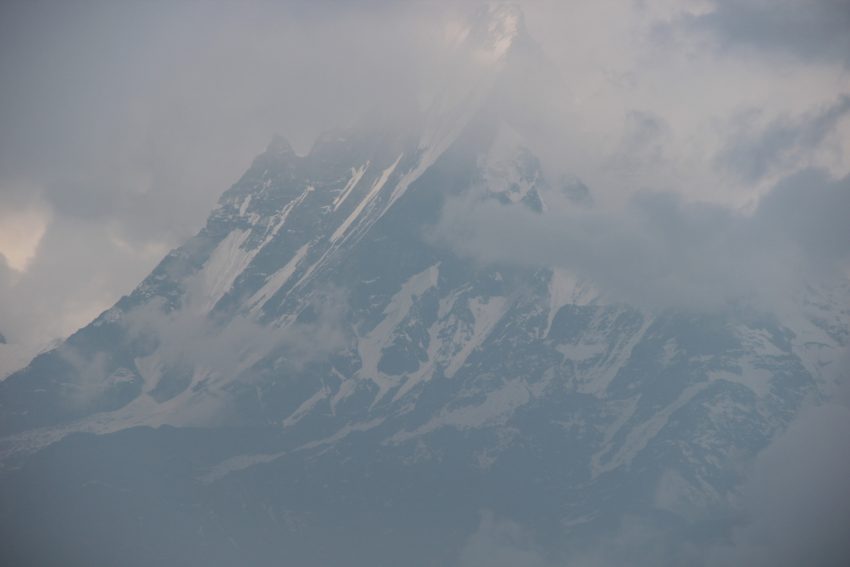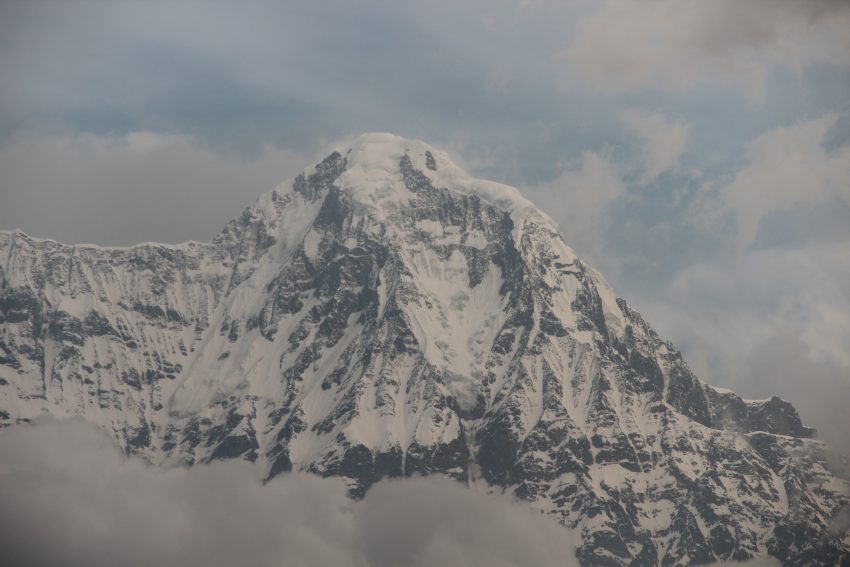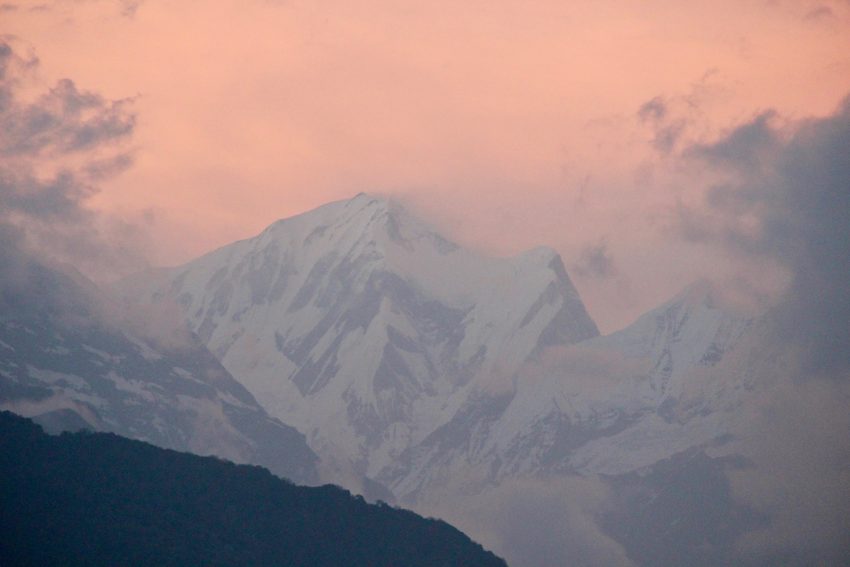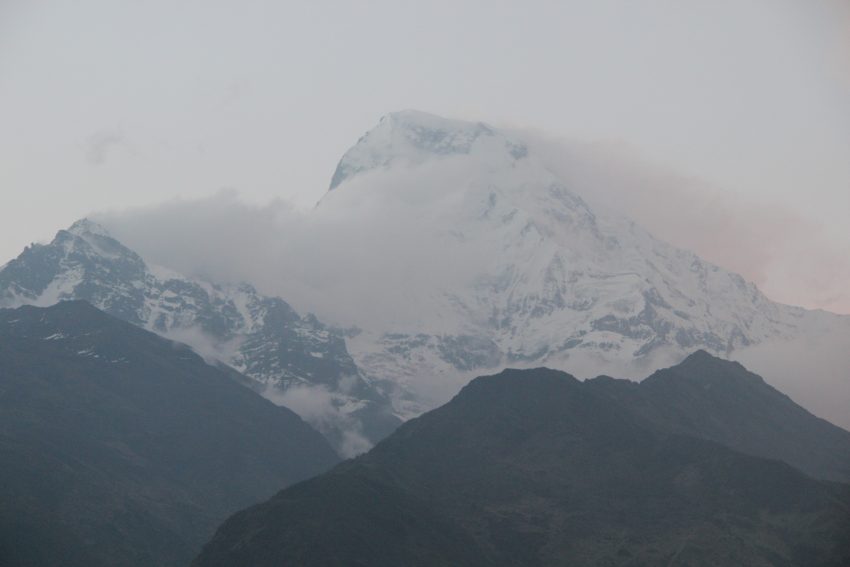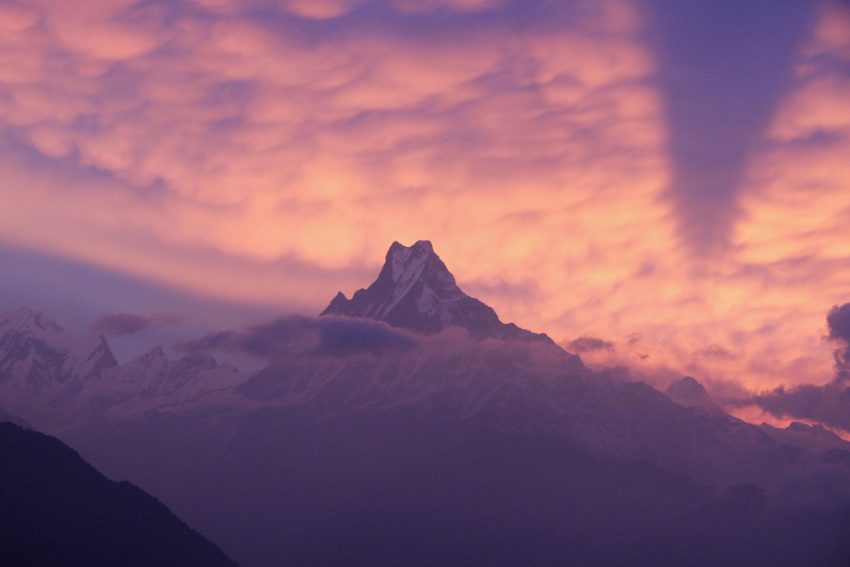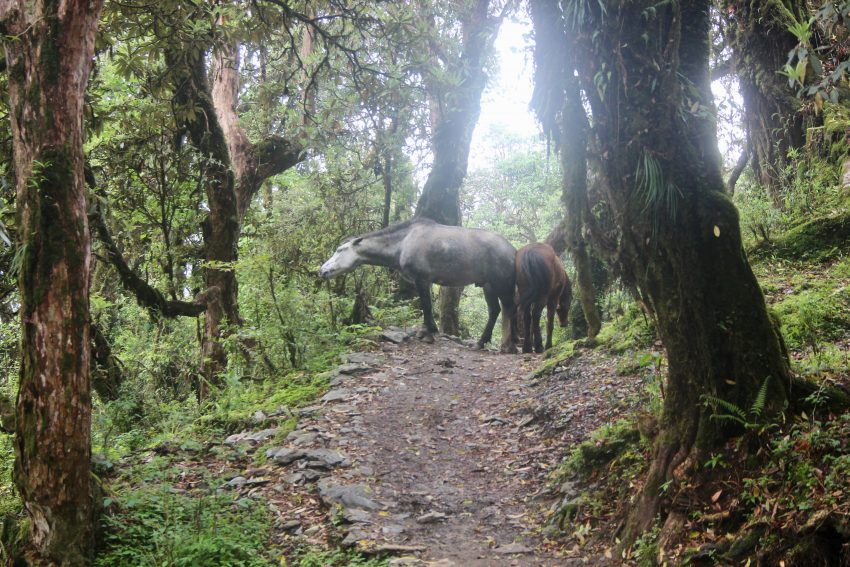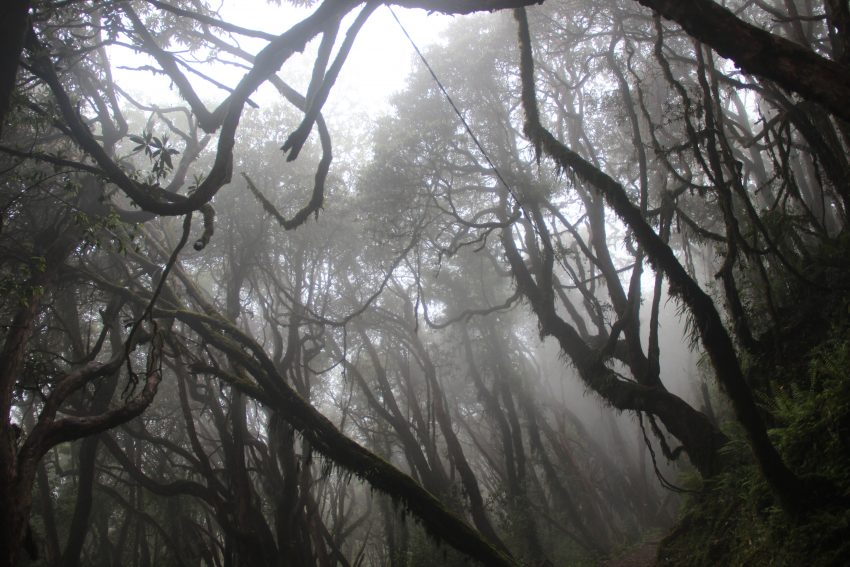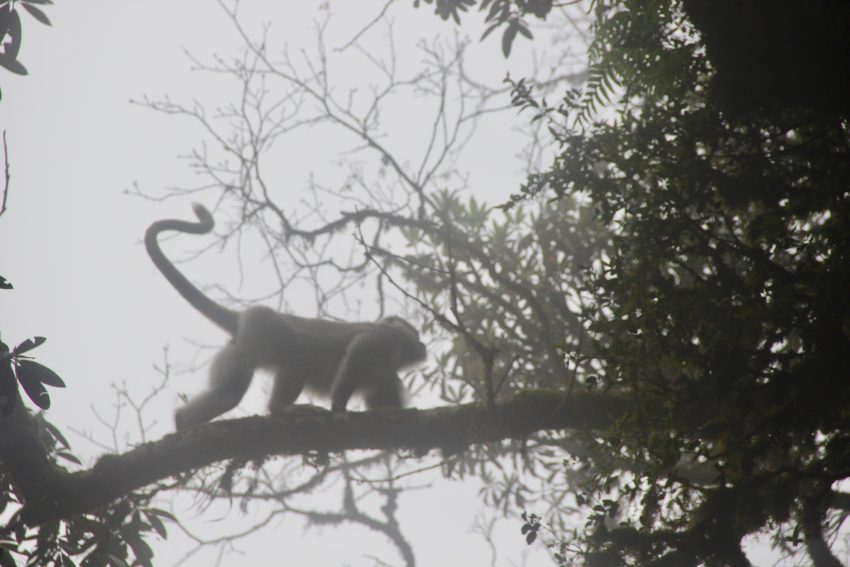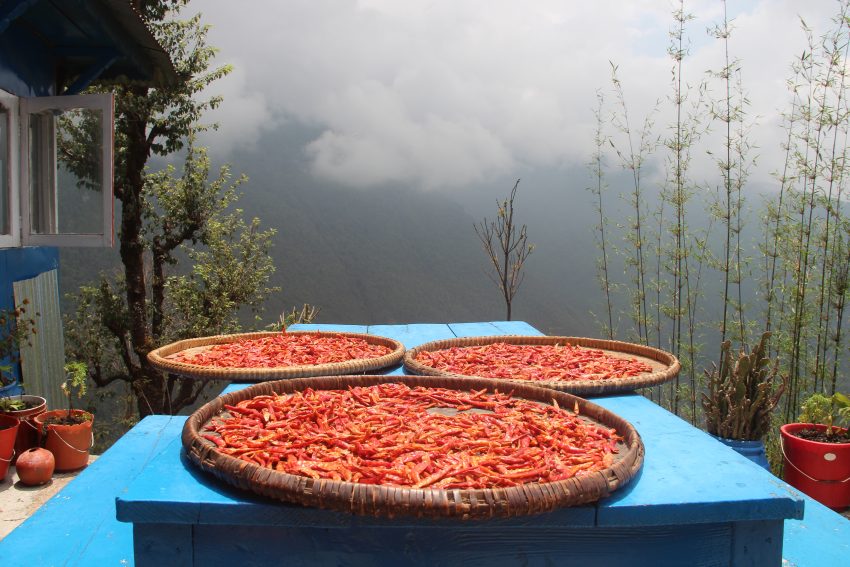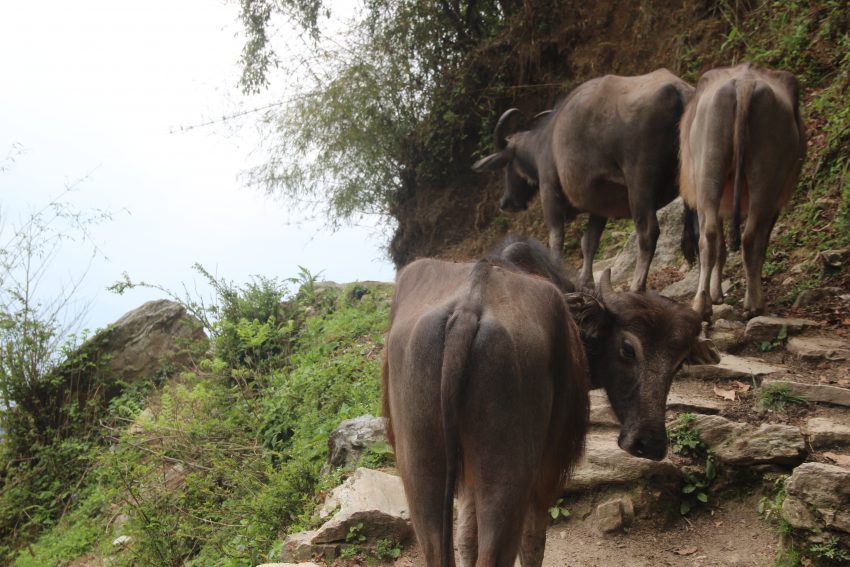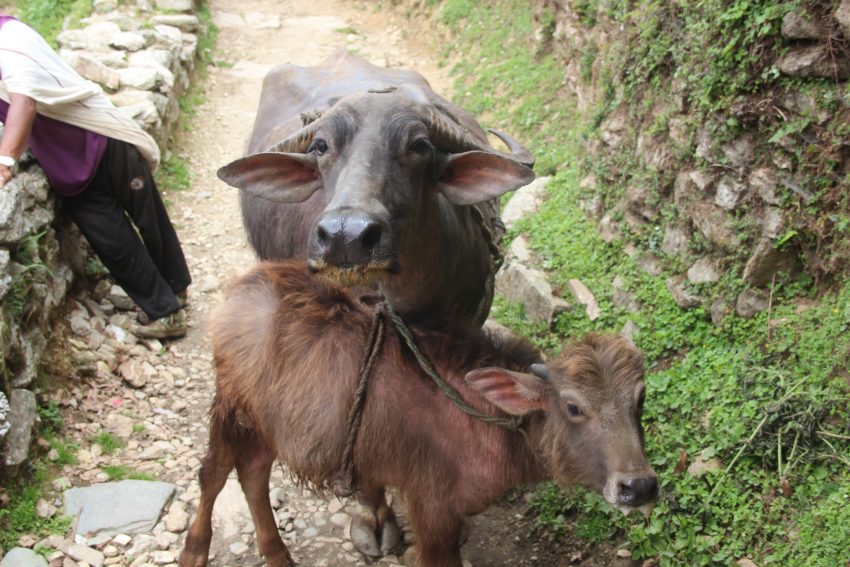
Before the semester some of the students had been travelling in India, while others had been elsewhere in the world. Daniela and I planned to go to northern India after the semester, but we also spent some time in Nepal before heading there (the route to India follows in detail in an upcoming post).
Since I never have been trekking on a higher altitude before, and Nepal is one of the most renown trekkers paradise, a few of us planned to do longer treks after the course. Monica from Norway did the whole Annapurna circuit and Marcus from Sweden did Pune Hill. All treks can be extended and shortened, but as an example, the Annapurna trek usually takes between 12-21 days, depending on rest days and sides treks etc. Originally my plan was to trek Mardi Himal, which is a beautiful 10 days trek where you can come really up-close with the holy fishtail mountain if the weather is clear. Unfortunately after a heavy cold I postponed and shortened my trek to a 6 days one, climbing up to the viewpoint of Pune Hill and further passing Ghorepani, and up to some peaceful hot springs connecting with the Mardi Himal trek. Some of the students also did Pune Hill during our long weekend in the middle of the semester. Usually high season for trekking in Nepal is between September until November and then again from February until the beginning of May. I was lucky, as my trek started in the end of May, to see some spring flowers and even good weather as well as breathtaking views of Annapurna south, fishtail mountain and a few more peaks, as this usually is the start of the monsoon season (late may).
As I never previously had been trekking, I was rather nervous to be honest. This of course, proved to be completely unnecessary! But a few things may be good to have in mind before heading of. First of all, if you are unexperienced and trekking alone it is advisable to go with a guide. I went through the 3 Sisters Adventures trekking, which is a supercool agency that support the involvement of women and give less fortunate women a chance for improvement and development. I had a wonderful guide called Tila, which I actually made great friends with and spend a great amount of time with my last days in Pokhara before heading south towards the Indian border to meet Daniela. However, when preparing for trekking there are so many options. Budget to more expensive trekking equipment can be purchased in both Kathmandu and Pokhara. If you are doing Everest base camp, therefore probably passing through Kathmandu, it is advisably to buy equipment there. I personally bought most of my equipment and trekking clothes and shoes back home in Sweden. But all this is possibly to buy here as well, but may or may not carry the same quality. Conclusively, you shouldn’t freakout about buying all trekking equipment before arriving in Nepal. But perhaps, if you’ve decided to do some sort of trek, consider if it is worth investing in more long-term equipment back home for other future treks, and save some money on the small stuff and purchase them in Nepal.
It all started off with a jeep-drive reaching two hours, out from the city of Pokhara, up to an altitude of 800 metres. Even the car ride was soothing through the bumpy roads as breathtaking views were seen from here too. The same day, Tila and I started walking for 5 hours and reached the first Teahouse stay just before sunset and had our first Dhal Bhat dinner (traditional lentils, rice, pickle and papad), which became somewhat a tradition every evening (we called it our Dhal Bhat circle!). I actually started craving Dhal Bhat every evening, as they seemed to have a different touch at every other rest-place, making it exciting to find the best one! The second day was definitely the toughest one as this was the most difficult climb, consisting of mostly steps, hour in and out. However, equally beautiful views with changing natures and beautiful villages passing by. Every following day was different from the other as the mountains seemed to change as if they were alive. From steeping agricultural surfaces, to woodlands, following by river streams, to more moisture rainforests, to tall pine tree woods as if a fairytale. Passing buffalos, staring mountain monkeys, donkeys, and horses as high up as the clouds gave a sensation of tranquility in the mysteries of the mountains. As if, metaphorically speaking, being on a Hobbit-journey. Furthermore, meeting mountain people and their smiles, gave an inexplicable realisation of the unknown. Like walking an undiscovered path. I presume it only possibly to give this experience the closest thing to justice through a few pictures.
To sum it up, the experience of trekking in Nepal is really beyond astonishing, and has to be experienced to fully understand. Even if some routes and time periods may be ”more crowded” out in the mountains, and the fact that you can get a chocolate cake while trekking out in the middle of nature, it is a magical experience being close to nature that reaches your heart and makes you feel in tune and connected with everything true and valid in life. Even after walking tough 8 hours, with mostly uneven stairs and aching shoulders, you stop and catch your breath, observe you’re surrounding and acknowledge the obvious presence of nature in everything. From the tiniest stone, to the ladybug resting in the evening sun to the moonshine in the star ocean over the mountain peaks. It is almost enchantingly unreal. The feeling of connectiveness and harmony penetrates from within, and one feels almost as in another time, or perhaps the most real time, there and now, simply being. Even after tough 6 days of up and down, I felt as if a had been meditating through it all, and honestly felt remote towards the fact of heading back to ”reality”, as if I had too.
I believe the message is more than clear. If your in Nepal and have time, trekking in the Himalayas, long or short, is life-changing.
– Malin –
